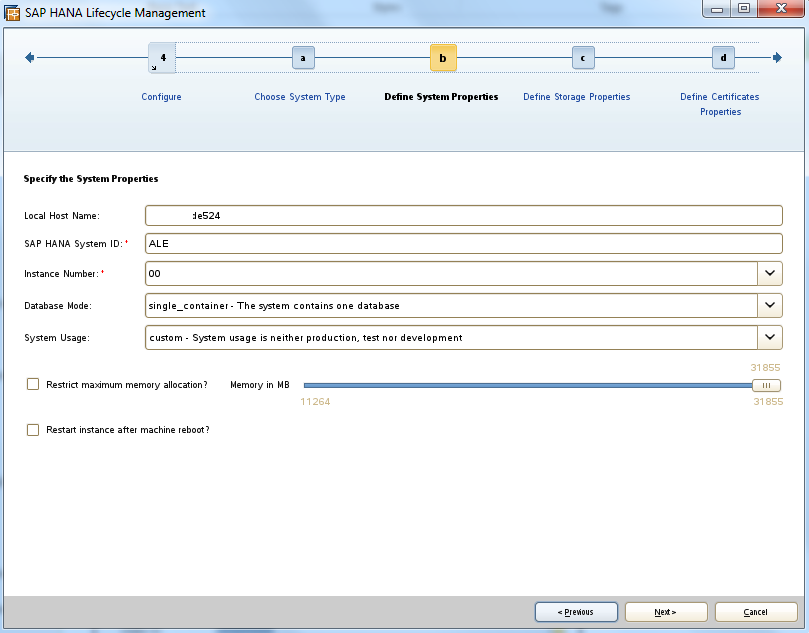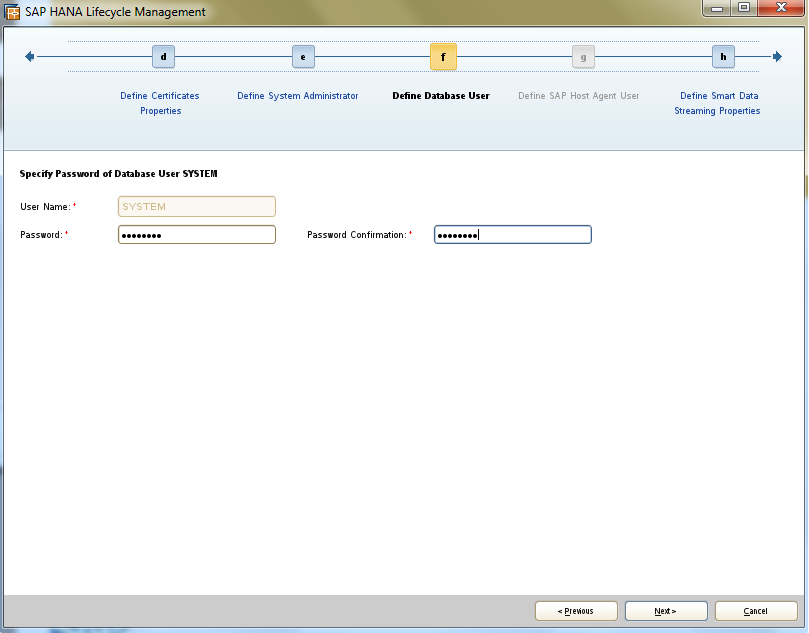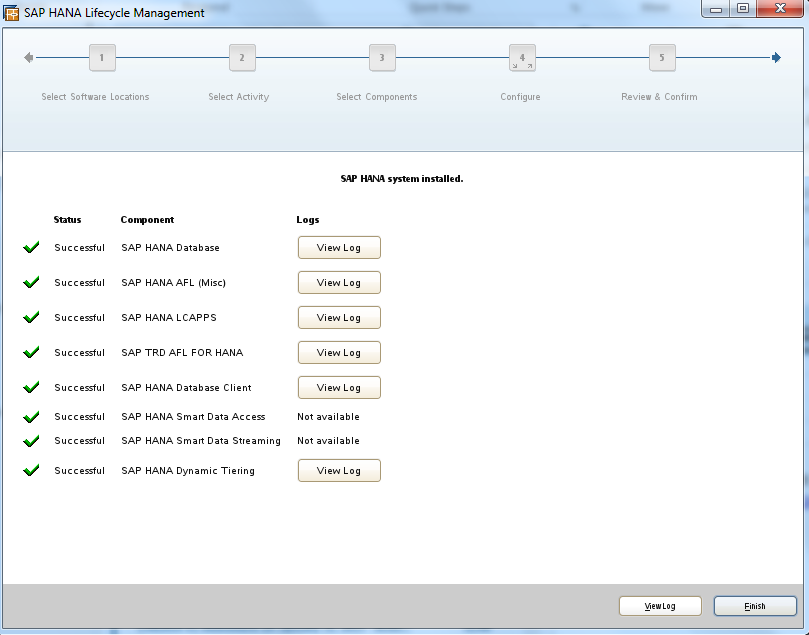
- SAP Community
- Products and Technology
- Technology
- Technology Blogs by SAP
- Install SAP HANA Dynamic Tiering - Part 3 - Inst...
- Subscribe to RSS Feed
- Mark as New
- Mark as Read
- Bookmark
- Subscribe
- Printer Friendly Page
- Report Inappropriate Content
Hello Guys!
After prepare all machines, now we will install HANA and Dynamic Tiering.
Install HANA
In the master node, go´s to the diretory that have all installation packages:
#./hdblcmgui
PS(If you don´t have GUI interface, try to use xming for windows http://www.geo.mtu.edu/geoschem/docs/putty_install.html)
The GUI interface will open with all packages, click in Next

Select install New System and click Next

Select all components for installation and click Next

In the System Type, select Multiple-Host System and configure the installation path and Non-Standard Shared File System.
Click in Add Host:
- Input the name of Dynamic Tiering Machine
- Select extended_storege Role
- Click Next
The configuration looks like the picture below:

Now we need to configure HANA System ID and the instance number.
In my case I created:
- Hana System ID: ALE
- Instance number 00
Click in Next

Now, we need to configure the data and volume directory, configure and click Next

Define Certificates properties: Keep with the default values and click in Next.

Here, we need to specify the password of system administrator of Linux.
Specify the password and click in Next

Now, we need to specify the HANA system password.
Specify the password and click in Next

Now, we need to configure the data and volume directory for Dynamic Tiering data files , configure and click Next

The installation will show the Summary of install. Click install

The installation will Start.

SAP HANA system was installed.

After this, we need to configure SAP HANA Dynamic Tiering.
- SAP Managed Tags:
- SAP HANA
You must be a registered user to add a comment. If you've already registered, sign in. Otherwise, register and sign in.
-
ABAP CDS Views - CDC (Change Data Capture)
2 -
AI
1 -
Analyze Workload Data
1 -
BTP
1 -
Business and IT Integration
2 -
Business application stu
1 -
Business Technology Platform
1 -
Business Trends
1,658 -
Business Trends
93 -
CAP
1 -
cf
1 -
Cloud Foundry
1 -
Confluent
1 -
Customer COE Basics and Fundamentals
1 -
Customer COE Latest and Greatest
3 -
Customer Data Browser app
1 -
Data Analysis Tool
1 -
data migration
1 -
data transfer
1 -
Datasphere
2 -
Event Information
1,400 -
Event Information
66 -
Expert
1 -
Expert Insights
177 -
Expert Insights
301 -
General
1 -
Google cloud
1 -
Google Next'24
1 -
GraphQL
1 -
Kafka
1 -
Life at SAP
780 -
Life at SAP
13 -
Migrate your Data App
1 -
MTA
1 -
Network Performance Analysis
1 -
NodeJS
1 -
PDF
1 -
POC
1 -
Product Updates
4,577 -
Product Updates
346 -
Replication Flow
1 -
REST API
1 -
RisewithSAP
1 -
SAP BTP
1 -
SAP BTP Cloud Foundry
1 -
SAP Cloud ALM
1 -
SAP Cloud Application Programming Model
1 -
SAP Datasphere
2 -
SAP S4HANA Cloud
1 -
SAP S4HANA Migration Cockpit
1 -
Technology Updates
6,873 -
Technology Updates
429 -
Workload Fluctuations
1
- Elevating Customer Engagement: Harnessing the Power of SAP Chatbots for a Personalized Experience in Technology Blogs by Members
- SAP Datasphere - Space, Data Integration, and Data Modeling Best Practices in Technology Blogs by SAP
- Workload in the SAP HANA in Technology Blogs by Members
- How to adapt modern Fiori apps without breaking them completely in Technology Blogs by Members
- The Indispensable Role of SAP Basis Consultants in the Rise with SAP Era in Technology Q&A
| User | Count |
|---|---|
| 43 | |
| 25 | |
| 17 | |
| 15 | |
| 11 | |
| 7 | |
| 7 | |
| 6 | |
| 6 | |
| 6 |